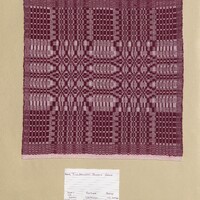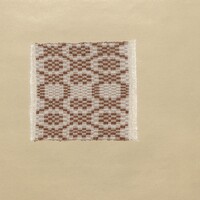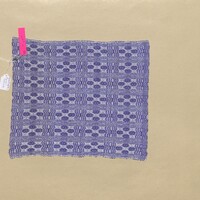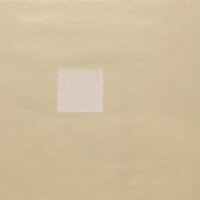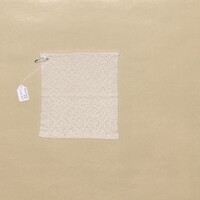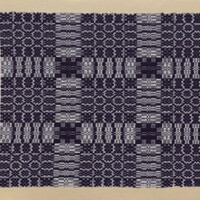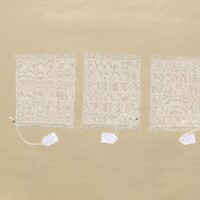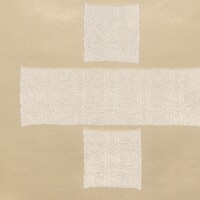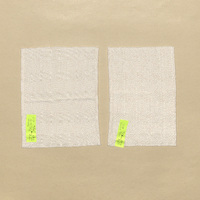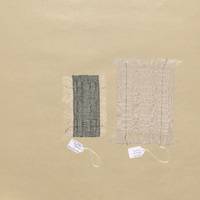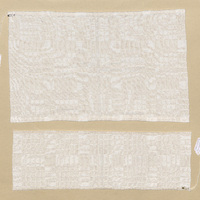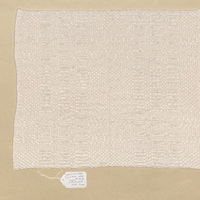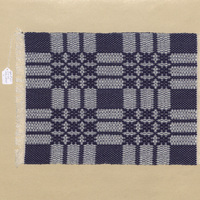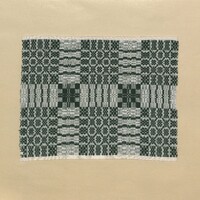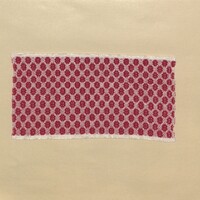Original Drafts, Samples, and Drawdowns
Household Textiles
The drafts that the Baer Sisters collected and preserved are for household fabrics. These materials can be roughly divided into three types: Coverlets, Counterpanes, and Table Linens or Towels with some of the patterns being used interchangeably.
- Coverlets were woven from overshot or geometric float work designs. Of the 21 drafts in the collection, 12 are examples of this type with 5 showing clear signs of use. Usually woven with a plain-weave, natural-colored ground and decorated with a colored wool supplemental weft, coverlets were the uppermost covering on a bed.
- Counterpanes, large, all-white cotton bedcovers, were woven from a variety of textured weaves including honeycomb, M’s and O’s, dimity, and huckaback. Of the 21 drafts in the collection, 3 are examples of this type with all showing clear signs of use.
- Table linens and towels were woven from M’s and O’s, huckaback, and twills. Often linen yarn was chosen for this purpose because of its beauty and its ability to withstand repeated washings. Of the 21 drafts in the collection, 5 are examples of this type with 2 showing clear signs of use.
Overshot or Float Work?
The terms overshot and float work are used interchangeably on this website to describe the same weave structure, namely a plain-weave cloth with a supplemental wool weft yarn that creates a geometric pattern.
The structure is commonly known as overshot nowadays, but the nineteenth century weavers most likely used the term float work.
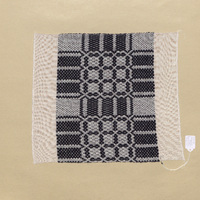
Float Work - The Freemasons' Coat of Arms
Natural cotton warp and tabby weft. Dyed wool pattern weft.
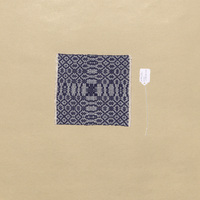
Float Work - Double Compass for Mrs. Young
Natural cotton warp and tabby weft. Dyed wool pattern weft.
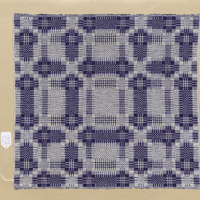
Float Work - Jackson's Windows
Natural cotton warp and tabby weft. Dyed wool pattern weft. Sample woven with incomplete draft. The drawdown and draft pictured here are complete.
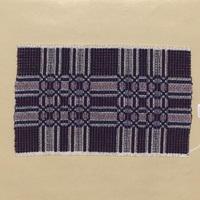
Float Work - Susannah Johnson Her Coverlid Draft
Natural cotton warp and tabby weft. Dyed wool pattern weft.
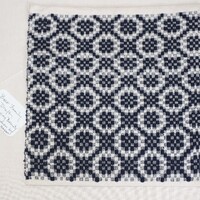
Float Work - Sleeping Beauty
Float work sample textile, the original draft bears the name Sleeping Beauty.
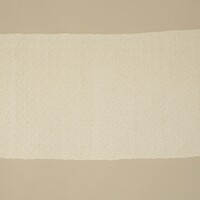
4-end Spot
Sample #13. This sample of 4-end spot weave would have likely been used for table linens.
The Weavers
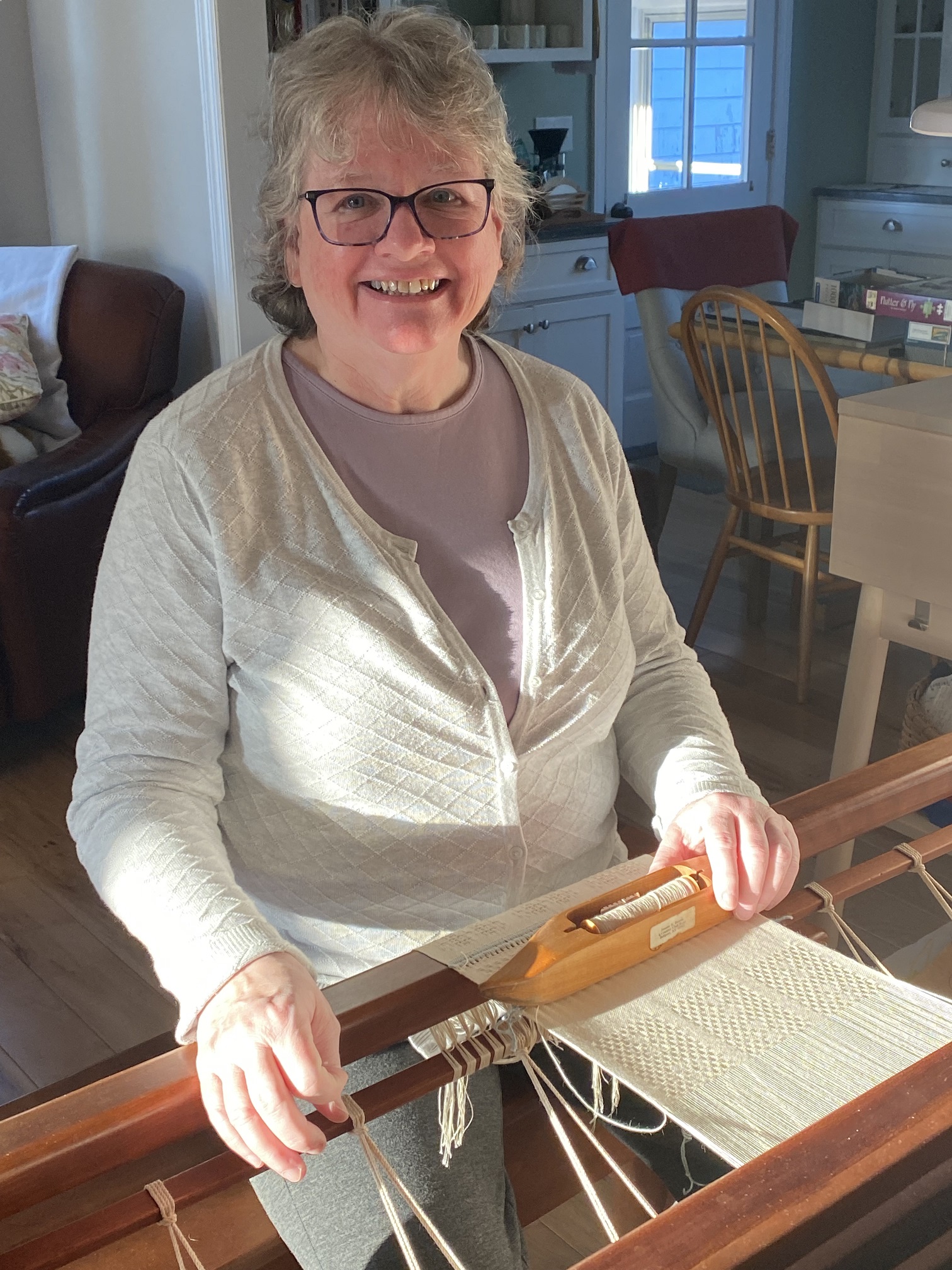
Joanne Downs
I loved weaving this piece ... and couldn't help but wonder who last wove it and how they might have used it. I imagined a woman weaving it, either for herself or someone dear to her, the loom near a window to light the work. The rooms we weave in would be very different, but we'd both throw the shuttle and watch the pattern build pick by pick. My own daughter, used to cold winters, will be marrying a man from Virginia and I think she needs a counterpane for home, something woven of lightweight cotton for a warmer climate, something the Baers and their neighbors would have recognized.
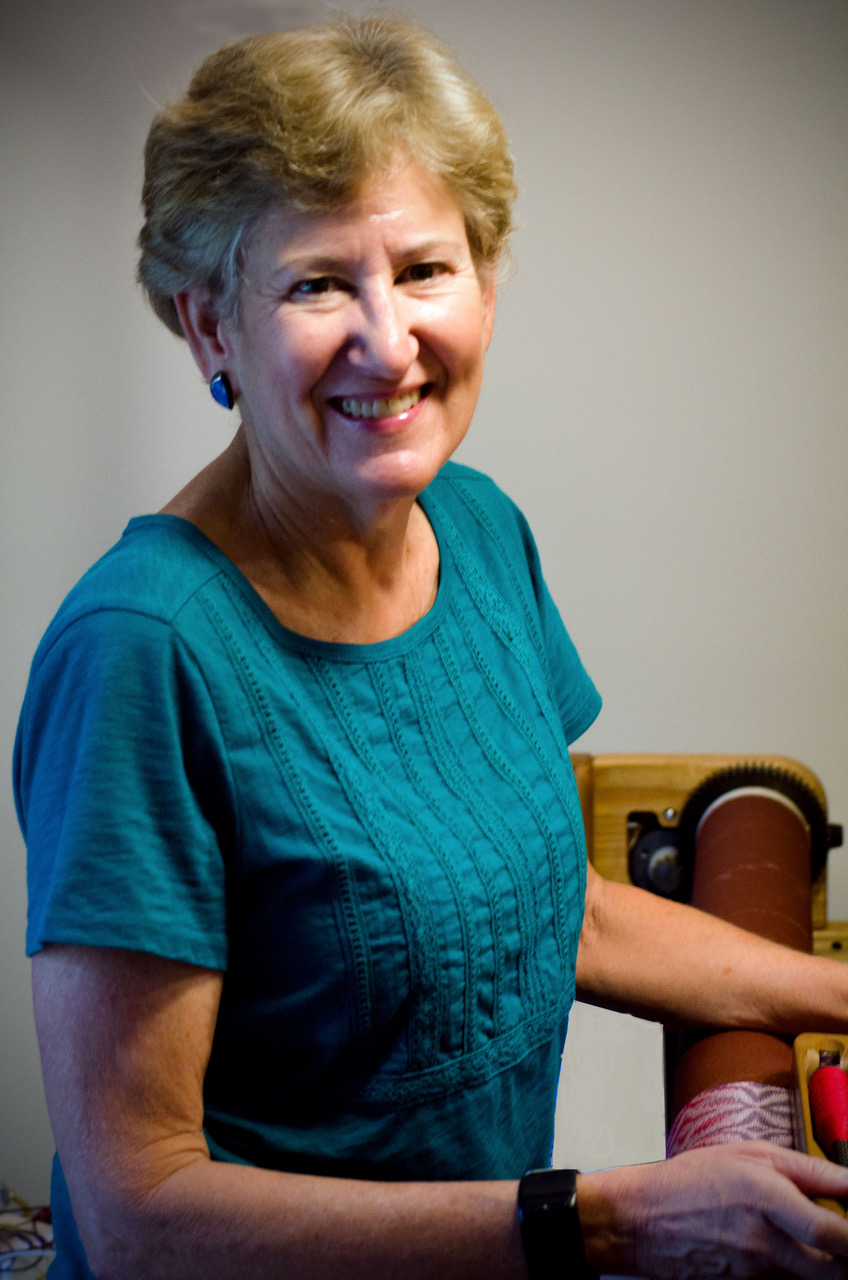
Laurie Duxbury
... l'm also struck by how we crave beauty. We need textiles to perform functions of keeping us warm and protected from the elements. They don't have to be beautiful in order to function, but the old weavers and the weavers of today strive to find ways to create beauty in the utility of their objects. We're not content to just have a useful cloth. We want to design a piece that also pleases the eye and makes us happy.
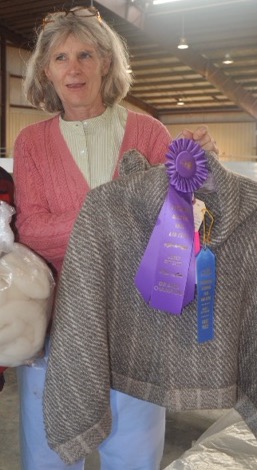
Catharine Hagan
By accident of history I suppose I am a modern weaver. I weave contemporary goods for the home but my heart is for the old, the sturdy, the tried and true, the handcrafted skills and products of ages past. The appeal of weaving has been to participate in and preserve the traditional skills. I am thrilled to be part of this collaborative work - it has given me my first opportunity to use my modern day weaving skills to reproduce works of the past; something I've had a passon for over the years.
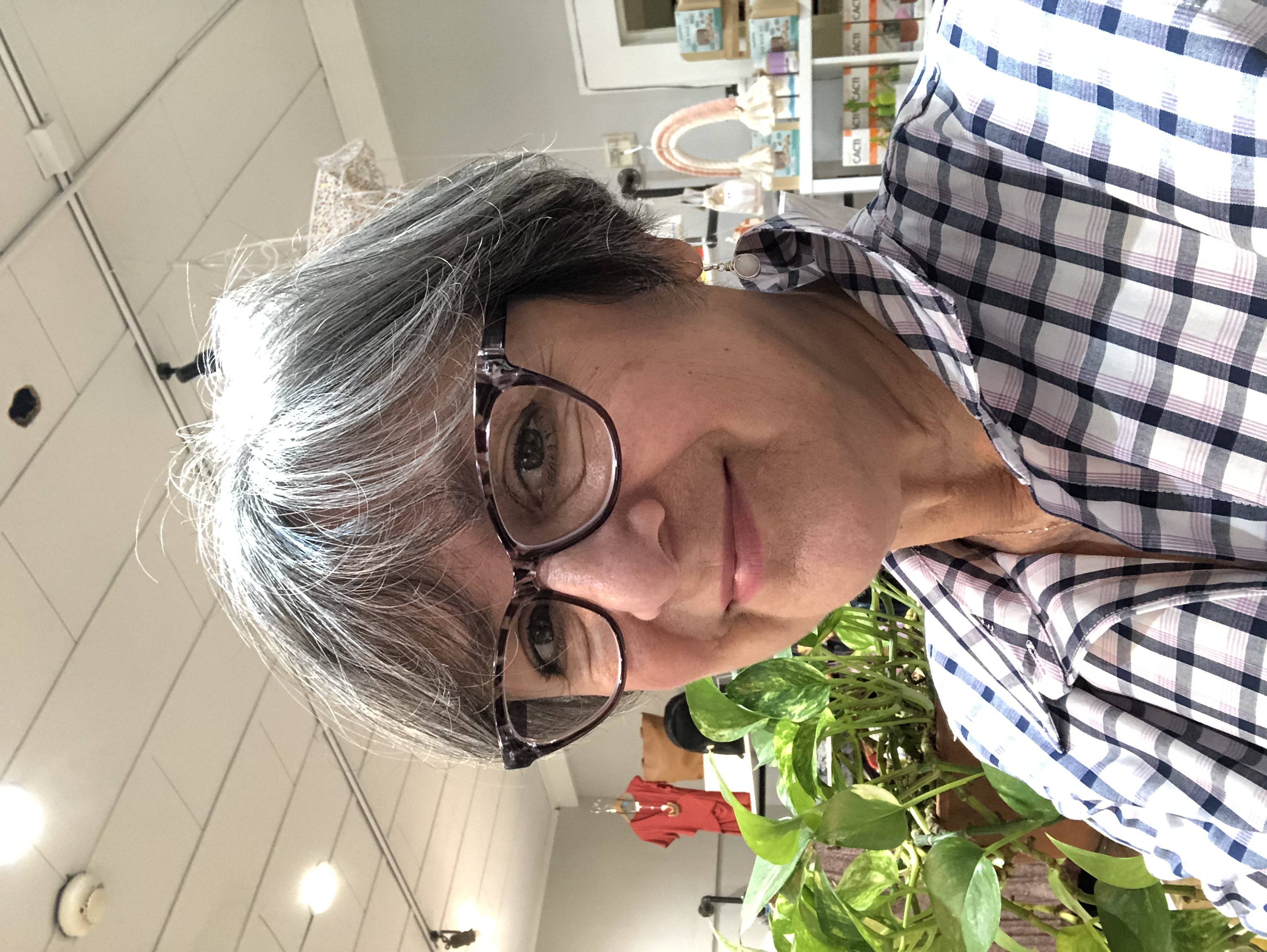
Jackie Heller
Weaver statement: For me as a weaver, being able to reproduce an antique draft is the ultimate pleasure! Ive always been drawn to old coverlets and their varied patterns.
I often ask myself-how did the colonials figure out the patterning of their drafts? While weaving I feel a connection to the spirit of these craftspeople who created such beauty out of necessity.
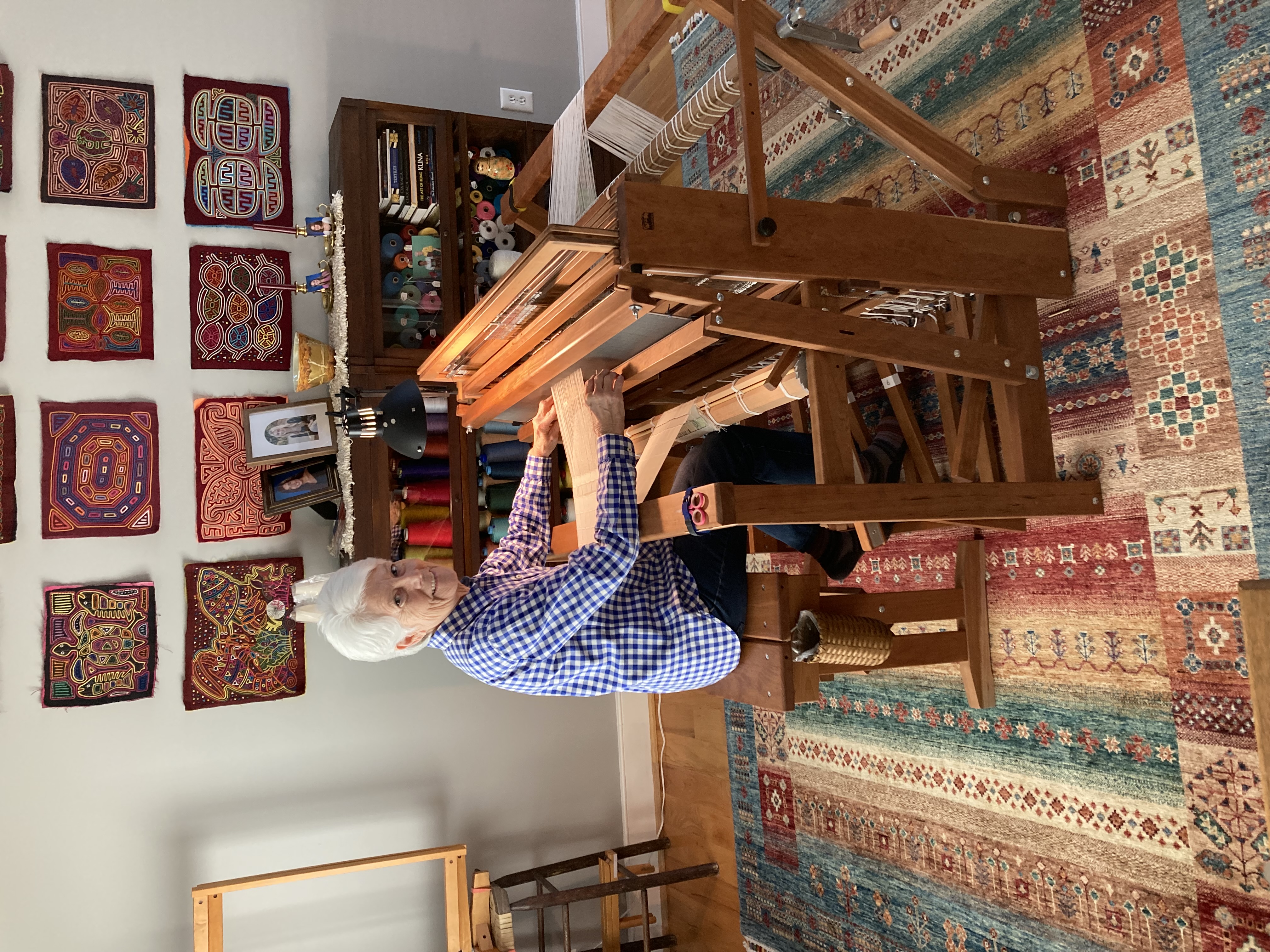
Kathy Hill
For a weaver, trying a new pattern is always a fun endeavour. Weaving patterns, called drafts, are written with great specificity with exhaustive directions for threading one's fiber in a specific order, attaching the treadles (foot pedals), and then additional graphics indicating the order with which the treadles are to be pressed. It was thus mind-boggling to be presented with the weaving patterns from the Baer family archive. Their simplicity; one did not know how to begin! I immediately felt a deep respect for these fellow weavers who had woven beautiful fabrics on the crudest of looms.
It was a joy to weave a coverlet sample for this project, appreciating with each throw of the shuttle that another woman had followed the same sequence and that by producing the exact same fabric we are connected over time.
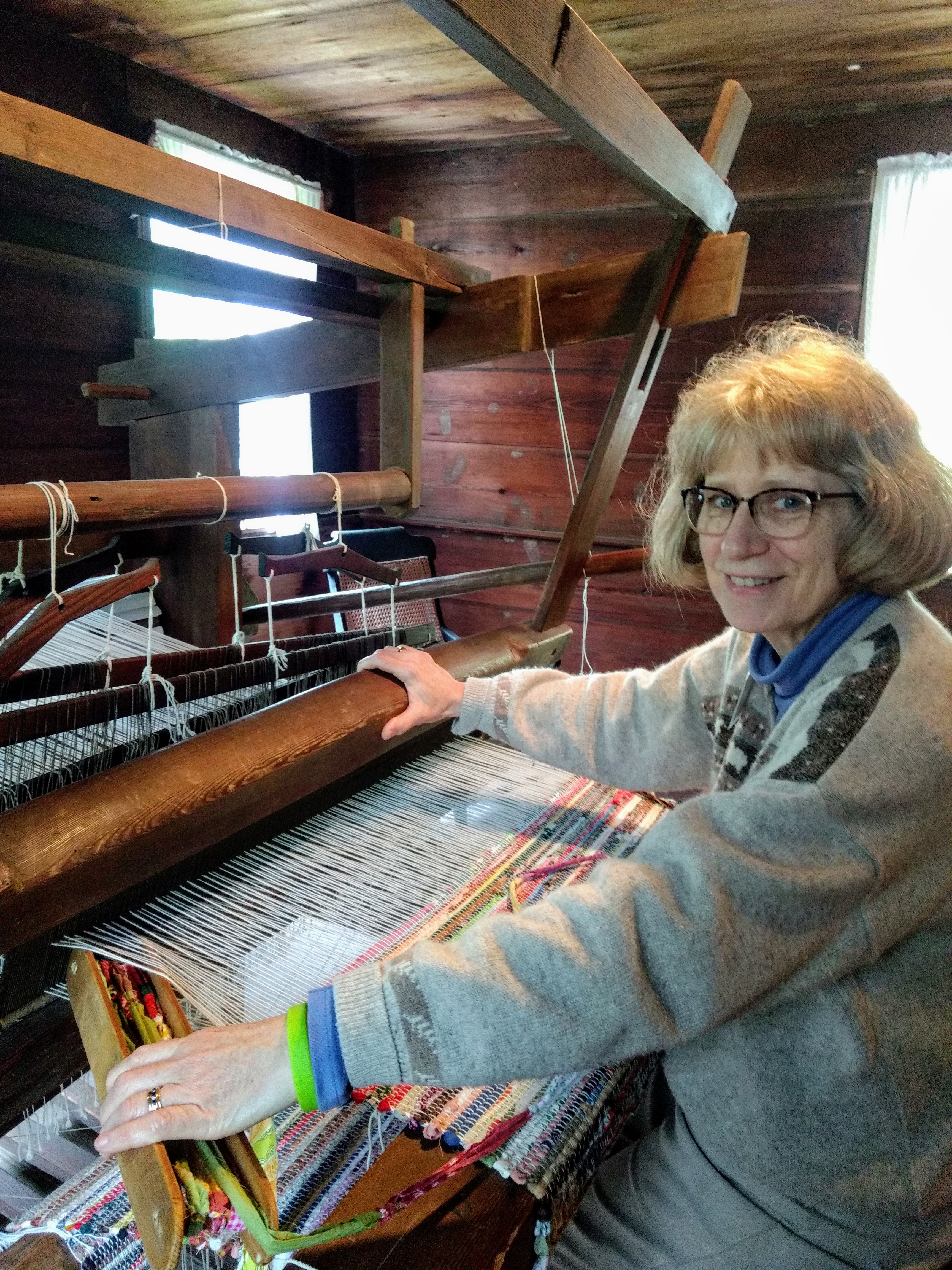
Linda Hardison
Old coverlet drafts have intrigued me for a long time. Besides the obvious beauty when woven, I appreciate the story hidden in the threads. The ones who shared these drafts with others, wove up the fabric, and those who cherished the coverlets are all of interest and add to the riches stored in these little marks on a strip of paper. Uncovering some of these riches by weaving up old drafts gives me immense satisfaction. It always adds to my knowledge and feeds my desire to learn more about coverlets. I feel privileged to be a part of this project!
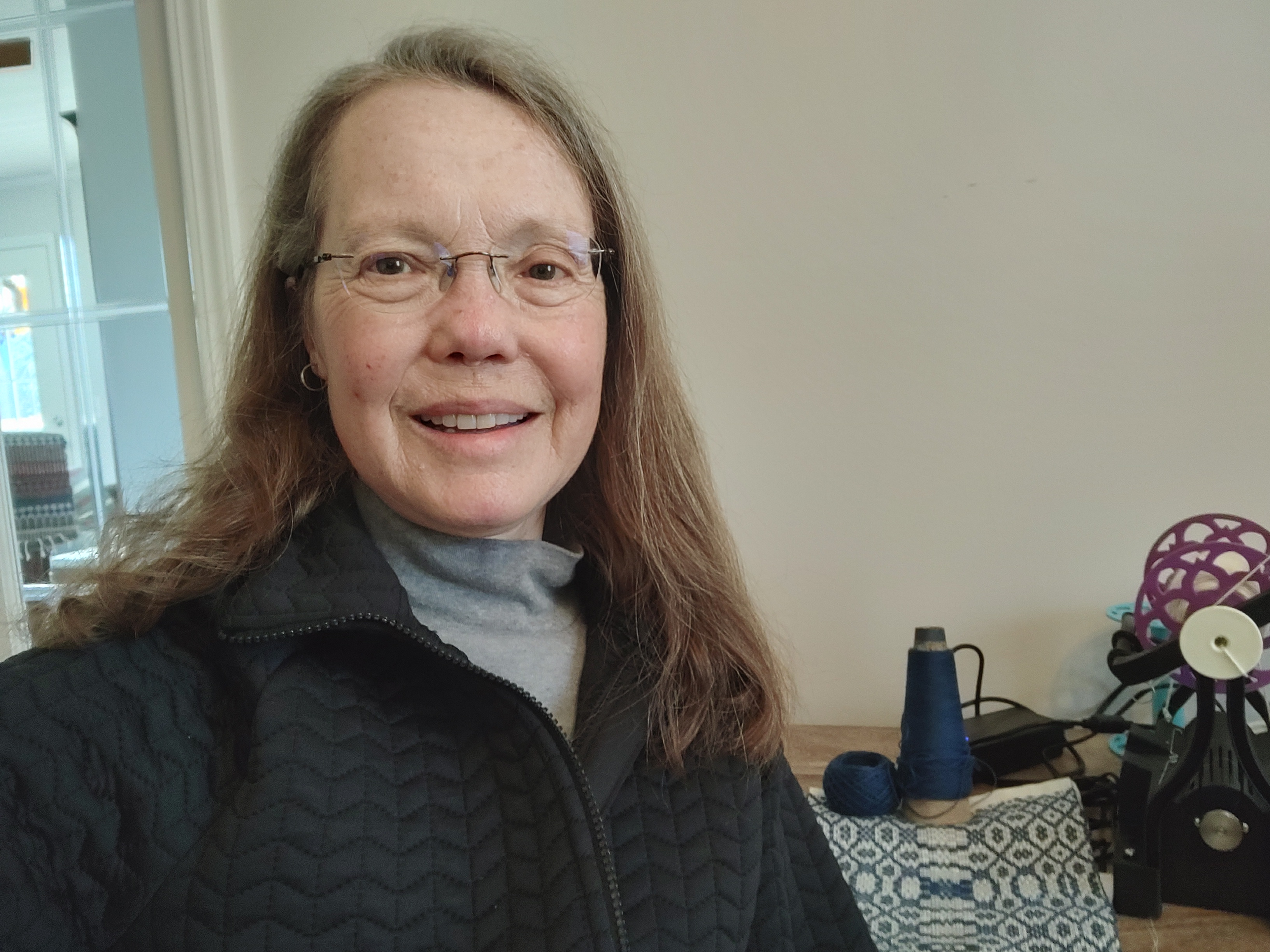
Lynn Henderson
Turning hatchmarks on an old piece of paper into a beautiful coverlet motif made me feel very connected to my sister weavers from another century. This was my very first experience interpreting an old draft but far from my last!
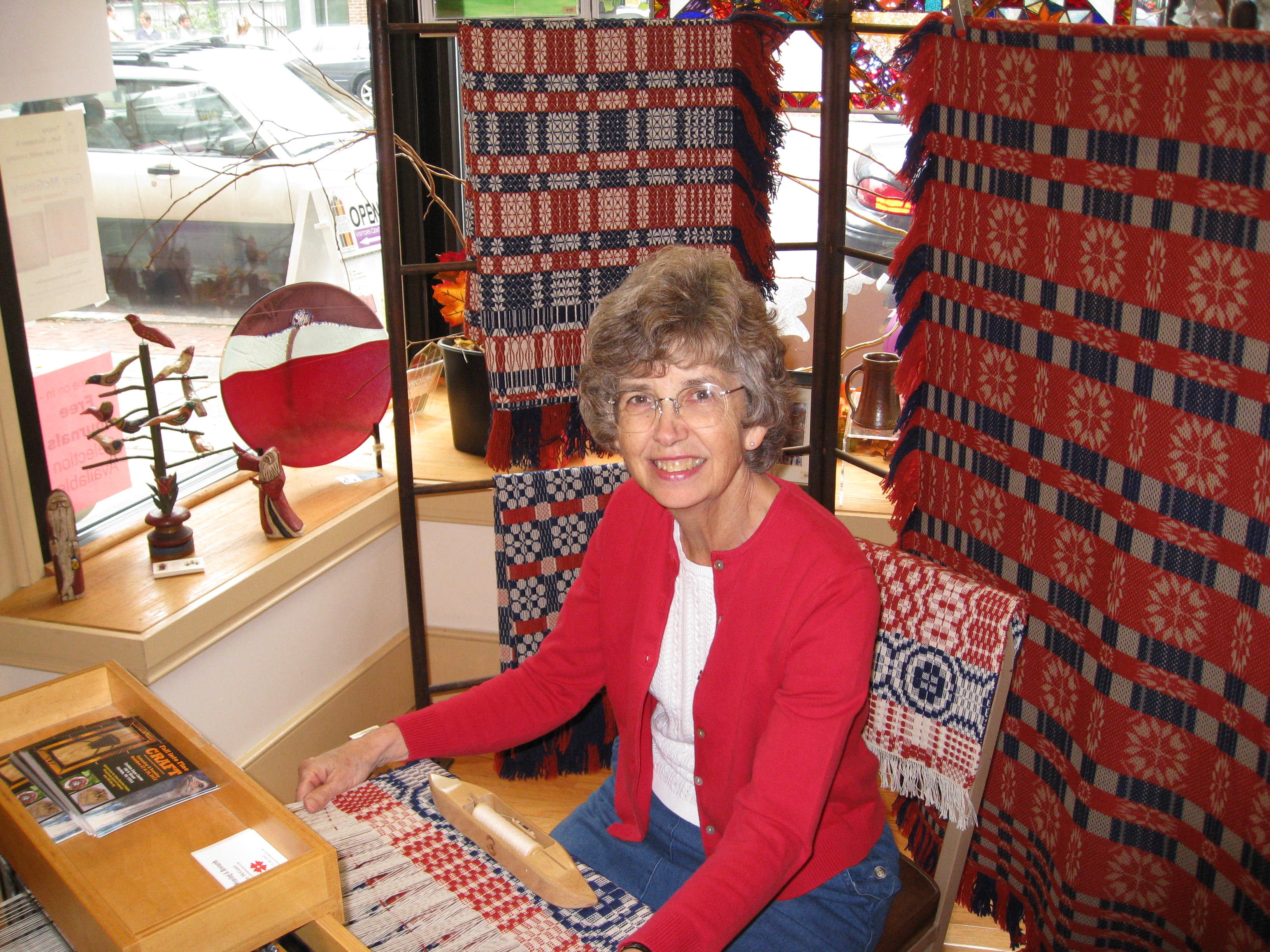
Gay McGeary
I see each early draft that I interpret as a mystery I have solved. It is satisfying to unwrap the puzzle and look at the drawdown of the pattern, a digital representatin of the draft. Now I can see the possibilities of my conception of the cloth. It is even more exciting to weave a sample to prove my translation.
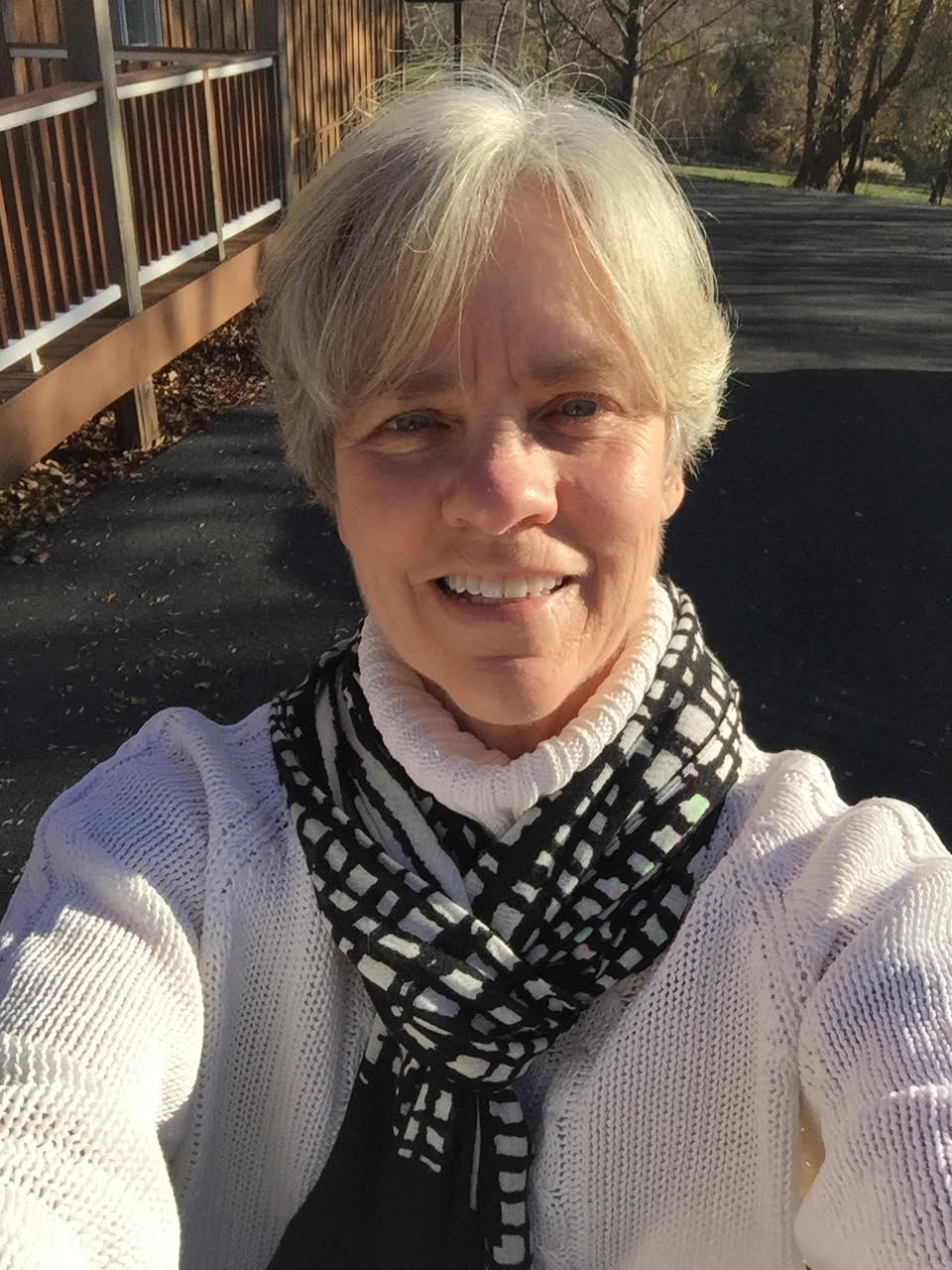
Carolyn Ohle
The woman from the Shenandoah Valley who scribbled down this pattern was a weaver. She was likely weaving cloth of necessity, not as I do - purely for the delight in its creation. I have such respect for her, in her ability to design and create beauty when the tasks of daily living were so demanding.
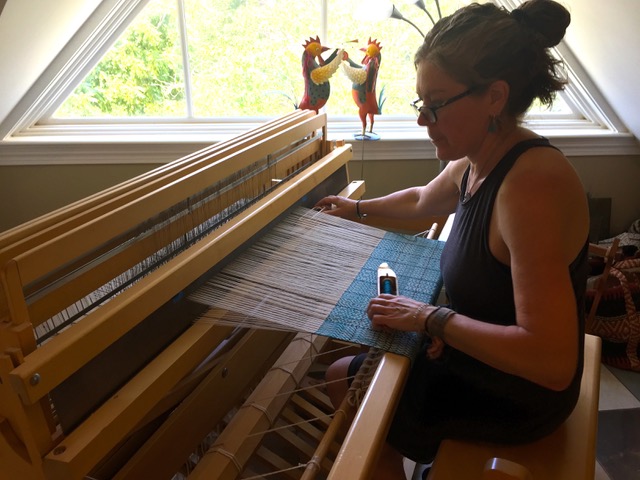
Jeanne Ralston
Seeing the scraps of paper, the drafts with their pin marks, thrilled me. I felt that by weaving these drafts we were bringing back lost voices and lost stories. We would be taking part in a tradition of “making” that spans not only centuries, but in fact, millennia. Textiles and weaving have been part of the human history for thousands and thousands of years. To be able to use our looms to recreate even a little of our history is such a privilege.
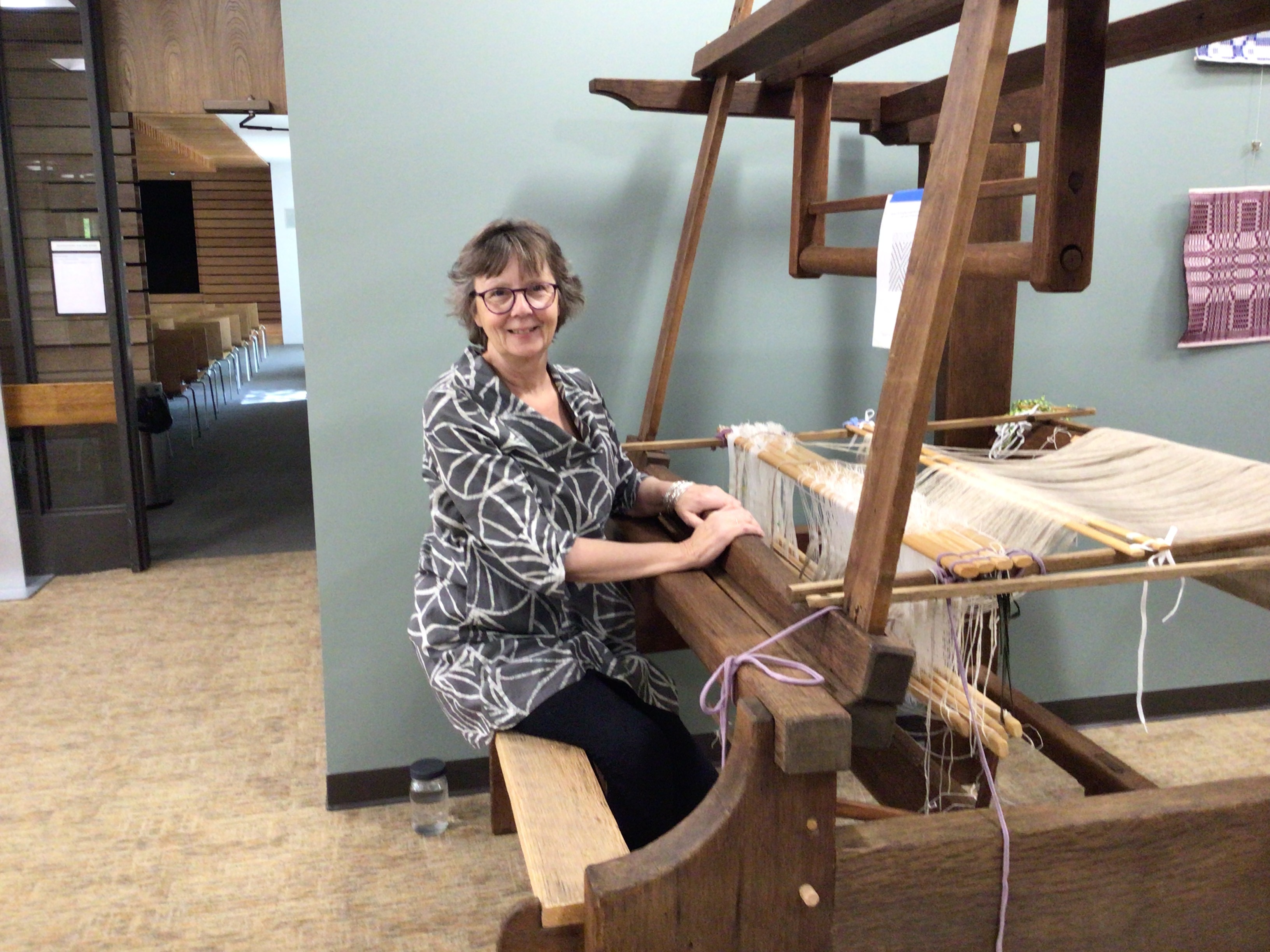
Frances Richardson
Just as notes on a staff can be turned into beautiful music, so the hatch marks and number on an old draft can be turned into beautiful textiles. When a draft has pin holes in it, it means it has guided other hands. Someone before me played the same tune I am playing. That's magic.
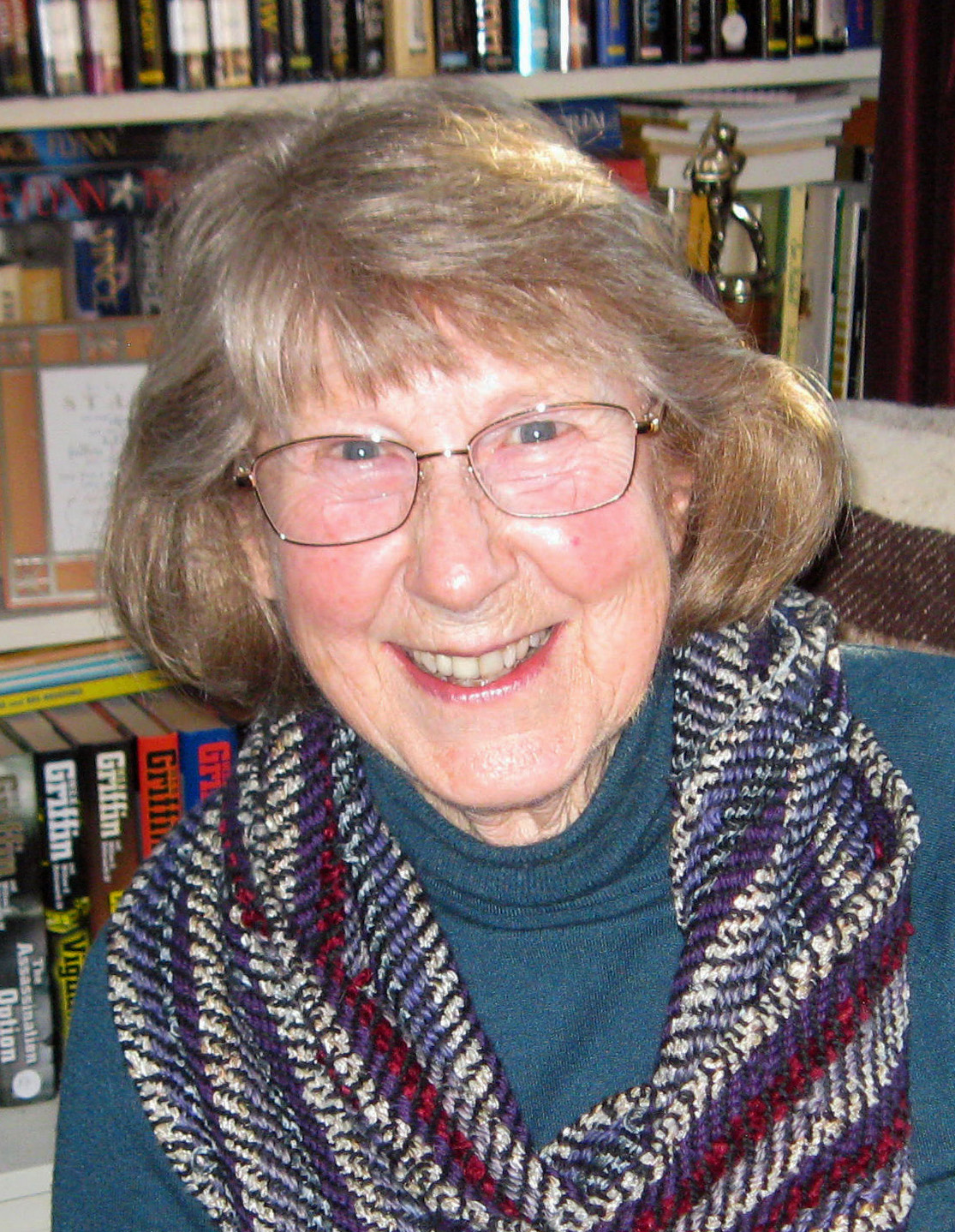
Jacqueline Stewart
We weave because we love textiles in all their infinite variety and the creative process that opens up a world of possibilities to us. We wove these historic weaving drafts because we are in awe of the skill and creativity of our ancestors. By participating in the Baer Project we became the vital link between the past and the future. Thus, without the willing hands of today's volunteers the incredible talent of past ages would have been lost forever.
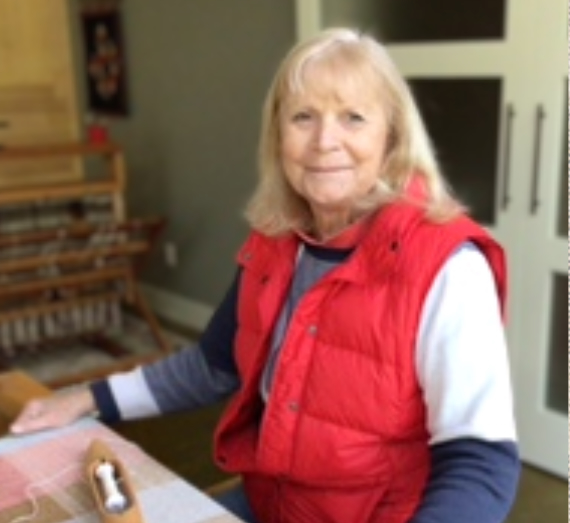
Linda Wilder
As I sat at the loom to begin weaving the sample, I was immediately taken back all those many years, thinking of my sister in weaving, wondering where her loom was situated, in the house by the fire, in the barn, in the kitchen? And I marveled at what I knew was a very rudimentary loom, compared to my modern one, wondered about the frustrations she might have encountered and the difficulty finding the supplies to make her coverlet, frustrations I shared with her as I wove my sample, so many things were different and so much was the same. But mostly I felt a great connection to the past. While things are dramatically different in Rockbridge County today, the weaving process is much the same. She shared her joy with her fellow weavers, I share with mine. She shared her drafts. I share mine. I could feel the satisfaction she felt as the pattern unfolded, the joy as the piece was cut off the loom and the love she shared as she used or gifted her weaving.
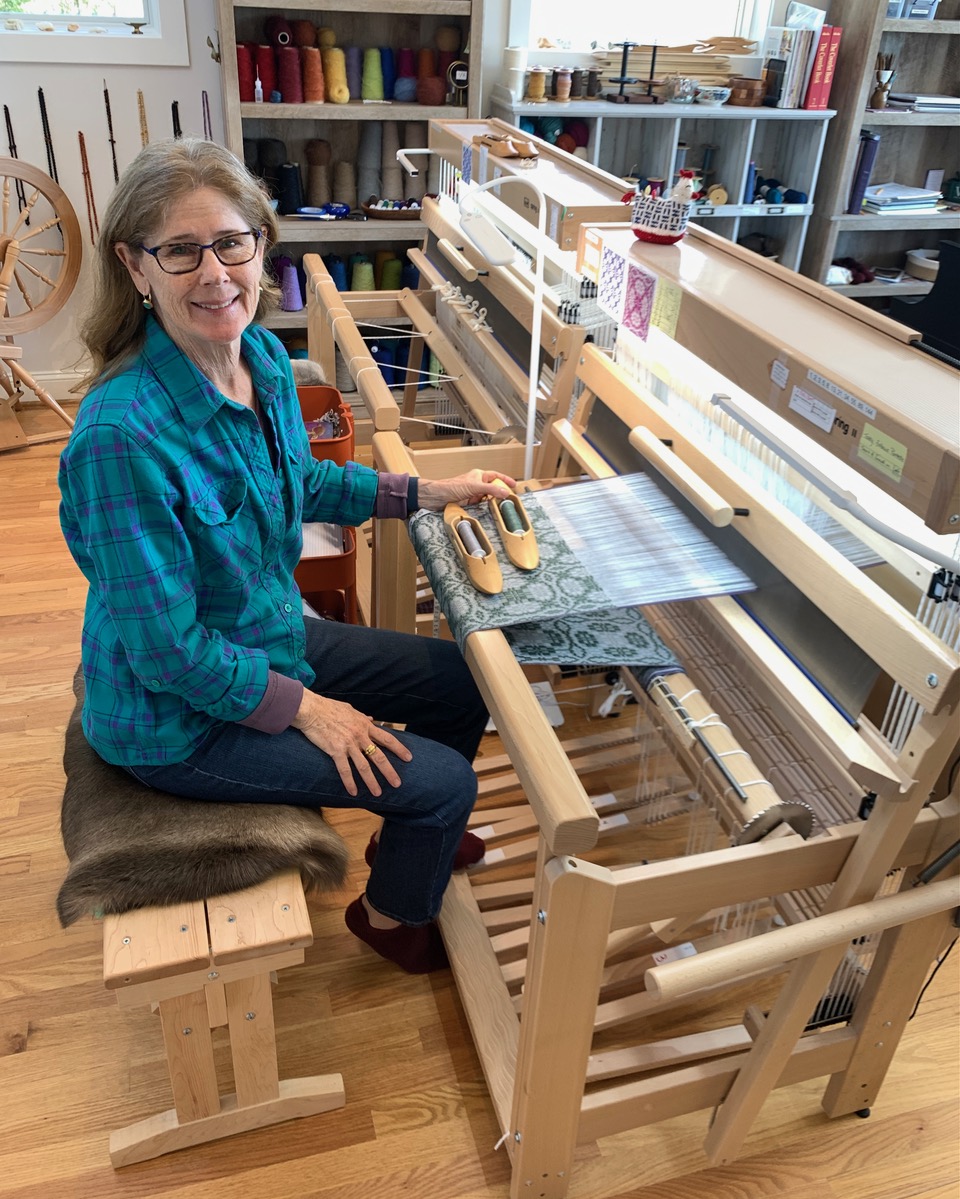
Khabira Wise
I always feel connected to the past when at the loom (or spinning wheel) because we’re carrying on traditions that in one form or another span all of history. Being able to reproduce historic drafts that are local, however, is extra-special in that it creates a direct link to the traditions and people of this area.
